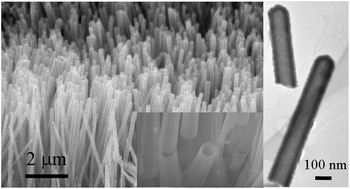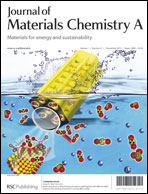Synthesis and photocatalytic activity of Zn2SnO4 nanotube arrays
Abstract
Highly ordered Zn2SnO4 nanotubes have been fabricated via a convenient hydrothermal approach by using a ZnO nanorod array as the template. The tips of the as-prepared nanotubes are all round sealed and the wall thickness of the nanotubes is about 20 nm. The study of time-dependent reaction results indicates that the shape evolution from ZnO nanorods to Zn2SnO4 nanotubes could be driven by the Kirkendall effect. The Zn2SnO4 nanotubes were found to have highly efficient photocatalytic activity. A complete structural and morphological characterization of the products was performed based on the results of X-ray powder diffraction, transmission electron microscopy, cathodoluminescence, scanning electron microscopy, Raman and UV-Vis spectroscopy.


 Please wait while we load your content...
Please wait while we load your content...